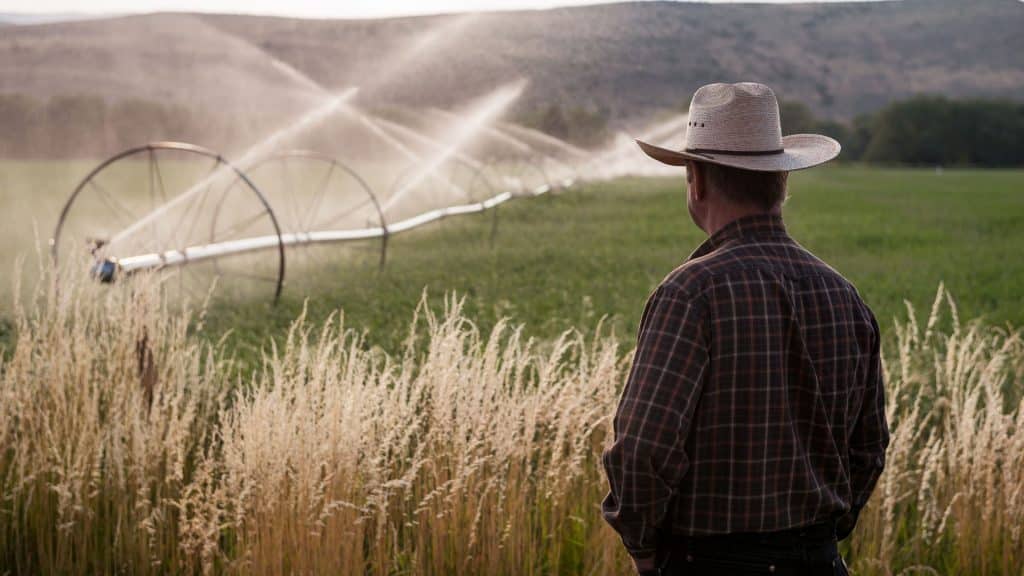More than $100,000 awarded to study improvements for vital creek in Northeastern Oregon
September 2, 2016

The Oregon Water Resources Department’s Water Conservation, Reuse and Storage Grant Program has awarded The Freshwater Trust $114,265 to study how upgrading irrigation infrastructure in Oregon’s upper Catherine Creek watershed could conserve water and benefit fish and farmers alike.
Catherine Creek is a 32-mile long tributary to the Grande Ronde River and has long supported endangered Chinook and steelhead. Prior studies have identified an 8.7-mile segment from Catherine Creek State Park to the town of Union as one of the highest priorities for salmon recovery efforts in the entire Columbia River Basin. Yet in many years, just keeping the creek flowing year-round is a challenge.
“Hotter summers, less snowpack, and heavy agricultural demand are placing serious strains on the creek,” said Caylin Barter, flow restoration director with The Freshwater Trust. “This award will go a long way toward allowing us to examine how much water could be saved with a few key modernization efforts and upgrades.”
Barter is referring to actions like lining or piping leaky irrigation ditches and transitioning from flood irrigation to sprinklers to improve efficiency and reduce overall use. If deemed feasible as a result of this study, these actions could save hundreds of millions of gallons of water a year and improve agricultural productivity.
“We aim to identify opportunities to improve flows in Catherine Creek by improving the use of the water being pulled out of it,” said Barter.
Most of the farms and ranches in the upper watershed grow alfalfa and pasture and depend on water diverted from Catherine Creek for irrigation. These operations use a network of unlined ditches to carry water from the creek to their fields, some of which are miles away from the water source. An unknown quantity of water is lost from the ditches to seepage and excessive vegetation along the ditch banks. On many farms, the water that actually makes it to the field is applied to the land via flood irrigation, a low-cost but less efficient method of applying an extremely limited resource.
The Freshwater Trust estimates that as many as 3 million gallons of water per day could be saved through efficiency projects, increasing flows in Catherine Creek by up to 5 cubic feet per second.
Over the next 18 months, the feasibility study will evaluate where the best opportunities for water conservation exist and will develop engineering designs for upgrading infrastructure on a prioritized set of ditches and fields.
The organization has been leasing water rights from landowners in the Catherine Creek watershed since 2011. Approximately eight landowners receive compensation for leaving water in the creek during the hot dry summers, a period critical to fish survival and recovery. The Freshwater Trust receives funding for these voluntary deals as well as substantial programmatic support from the Columbia Basin Water Transactions Program.
Prior to The Freshwater Trust’s leasing efforts, flows commonly dropped below one cubic foot per second through the town of Union in July and August. Today more than three cubic feet per second is protected instream in late summer, improving migration conditions for spawning adults and providing cold water refuge for juvenile fish.
“As we’ve built our program in Catherine Creek over the past five years, instream leasing has been the primary way we’ve been helping to restore the watershed,” said Barter. “We’re looking forward to expanding our approach and discovering how modernizing some of the infrastructure here can further increase flows while improving agricultural productivity.”
The Freshwater Trust will carry out the study with significant in-kind support and technical assistance from the Grande Ronde Model Watershed and the U.S. Bureau of Reclamation. Locally based Anderson Perry & Associates will provide engineering design services.
“This study will develop a roadmap for implementing efficiency projects with the greatest ecological benefits,” said Barter. “By using a prioritized approach to our conservation actions, we can help ensure the creek continues to support the community and its agricultural economy for years to come.”
#agriculture #Anderson Perry & Associates #Catherine Creek #Chinook #economy #engineering #Grande Ronde Model Watershed #Grande Ronde River #Grant #landowners #Oregon Water Resources Department #steelhead #US Bureau of Reclamation #water conservation
